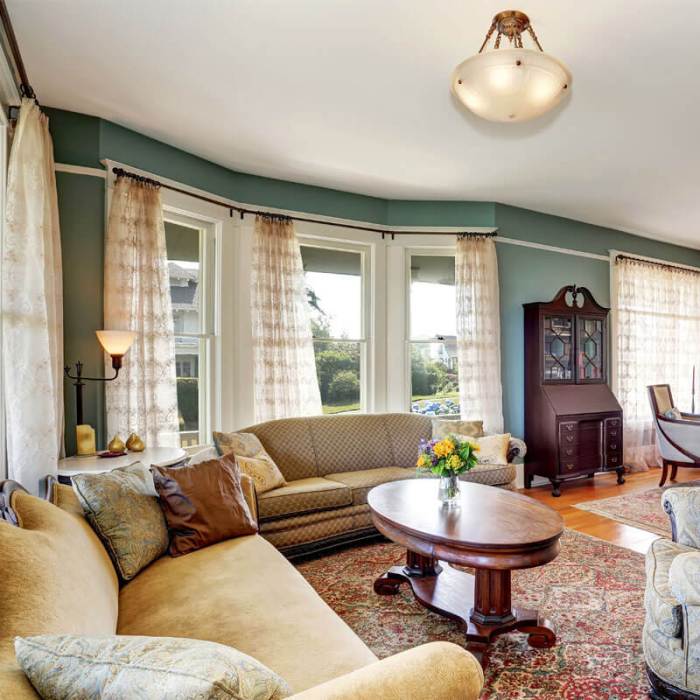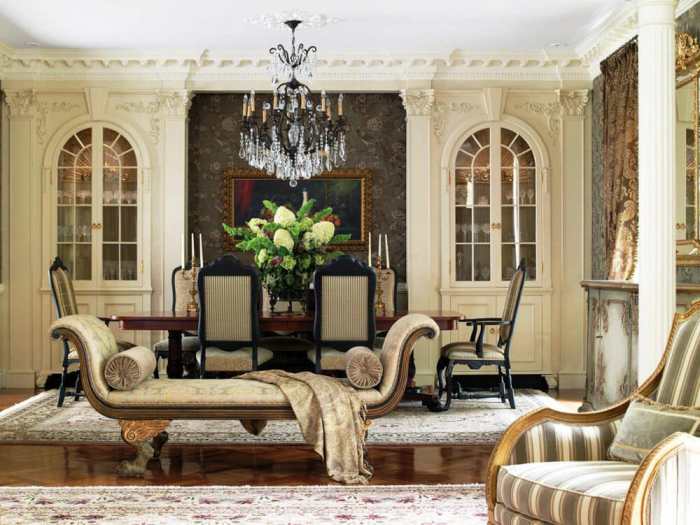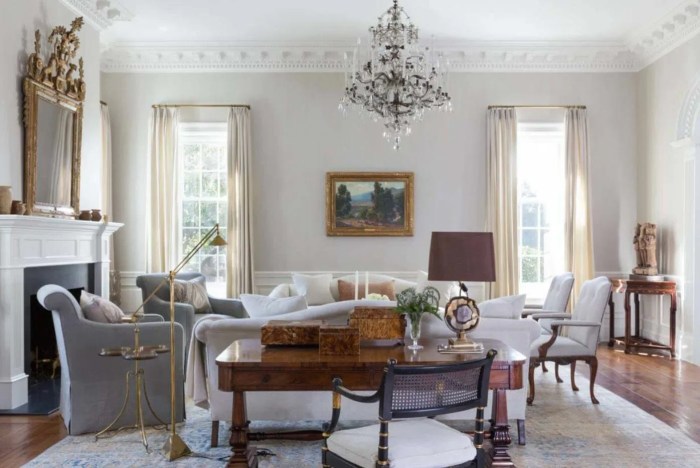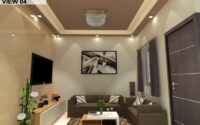Classic House Design Interior: Timeless Elegance
Classic house design interior is an enduring style that blends timeless elegance with a sense of refined sophistication. From the grand mansions of the past to contemporary homes that embrace traditional elements, classic design embodies a rich history of architectural principles and aesthetic sensibilities.
This timeless approach emphasizes the use of high-quality materials, intricate details, and carefully curated furnishings to create spaces that are both visually stunning and inviting. Whether you’re drawn to the grandeur of Georgian architecture or the charm of Victorian interiors, exploring the world of classic house design offers a journey into a realm of refined living.
Lighting and Windows in Classic Houses: Classic House Design Interior

Classic interior design prioritizes natural light as a key element, enhancing the elegance and spaciousness of a home. Large windows and strategically placed lighting fixtures play a crucial role in creating a warm and inviting ambiance.
Window Treatments in Classic Homes
Window treatments in classic homes serve both aesthetic and functional purposes. They add visual interest, control light levels, and provide privacy.
- Draperies:Luxurious fabrics like velvet, silk, or linen are often used for draperies, adding a touch of grandeur and sophistication. They can be floor-length or reach the windowsill, with intricate details like tassels, fringing, or tiebacks.
- Shutters:Wooden shutters are a classic choice, offering a timeless elegance and versatility. They can be adjusted to control light levels and provide privacy, and can be painted in various colors to complement the interior design.
- Roman Shades:Roman shades are a more contemporary option that still complements classic aesthetics. They provide a clean and streamlined look, and can be made from various materials like linen, cotton, or silk.
Lighting Fixtures in Classic Interiors, Classic house design interior
Classic interiors often feature a combination of natural and artificial light sources. Lighting fixtures are carefully selected to complement the overall design and create a warm and inviting atmosphere.
- Chandeliers:Crystal chandeliers are a signature element of classic interiors, adding a touch of glamour and sophistication. They are often placed in formal areas like dining rooms or entryways.
- Sconces:Wall sconces provide ambient lighting and add a touch of elegance to hallways, living rooms, or bedrooms. They can be made from various materials like brass, silver, or wrought iron.
- Table Lamps:Table lamps are a versatile lighting option that can be used in various areas of the home. They provide focused light for reading or tasks, and can be placed on side tables, desks, or nightstands.
Contemporary Takes on Classic Design

Classic design principles, with their timeless elegance and enduring appeal, have found new life in modern interiors. This fusion of tradition and innovation results in spaces that are both sophisticated and contemporary, reflecting the evolving tastes of today’s homeowners.
Contemporary Materials and Finishes
The integration of contemporary materials and finishes within a classic framework is a defining characteristic of this design approach.
- Natural Stone:Marble, granite, and limestone, staples of classic design, are often used in more modern ways. For example, a classic marble fireplace might be paired with sleek, minimalist furniture and geometric patterns, creating a visually striking contrast.
- Metal Accents:Polished chrome, brushed nickel, and brass accents add a contemporary edge to traditional elements. Think of a classic chandelier with a modern metallic finish or a sleek metal coffee table in a traditionally styled living room.
- Textured Fabrics:Velvet, linen, and silk, while traditional, can be incorporated in contemporary ways. For example, a velvet sofa in a bold color might be paired with minimalist artwork and geometric rugs.
Examples of Contemporary Interpretations
Contemporary interpretations of classic design showcase the versatility and adaptability of traditional principles.
- The Modern Farmhouse:This style blends the rustic charm of a farmhouse with modern elements. It often features exposed beams, reclaimed wood, and vintage-inspired furniture, but with a clean and minimalist aesthetic. For example, a farmhouse kitchen might feature reclaimed wood cabinets paired with stainless steel appliances and sleek countertops.
Classic house design interiors often evoke a sense of timeless elegance, with intricate moldings, rich fabrics, and a focus on symmetry. While these elements can be adapted to any size home, a 1100 sq ft space presents a unique opportunity to create a balanced and functional layout.
1100 sq ft house interior design can incorporate classic design elements like built-in bookcases or fireplaces, adding a touch of grandeur while maximizing space. By carefully considering the flow and functionality of the layout, a 1100 sq ft home can achieve a classic aesthetic that is both beautiful and practical.
- The Industrial Chic:This style combines the industrial aesthetic with classic elements. Think exposed brick walls, metal accents, and vintage furniture, but with a refined and sophisticated touch. A classic library might be reimagined with exposed brick walls, industrial lighting, and vintage leather armchairs.
- The Glamorous Classic:This style takes classic elements and elevates them with a touch of glamour. Think velvet upholstery, crystal chandeliers, and metallic accents, but with a modern edge. A classic dining room might be updated with a sleek, modern dining table and chairs, paired with a crystal chandelier and metallic accents.
The Timeless Appeal of Classic Design

Classic house design, with its enduring elegance and timeless appeal, continues to captivate homeowners seeking a sophisticated and enduring aesthetic. While contemporary trends come and go, classic interiors have consistently stood the test of time, remaining relevant and desirable across generations.
This enduring popularity stems from a confluence of factors, ranging from the inherent beauty of classic design elements to their psychological impact on those who inhabit these spaces.
Classic house design interiors often evoke a sense of timeless elegance, drawing inspiration from architectural styles that have stood the test of time. A popular variation on this theme is the California ranch house interior design, which seamlessly blends indoor and outdoor spaces , often incorporating natural materials and a relaxed, casual aesthetic.
This approach, with its focus on comfort and connection to the surrounding environment, offers a refreshing twist on classic house design principles.
Reasons for the Enduring Popularity of Classic Design
Classic design’s enduring popularity is rooted in its ability to evoke a sense of timeless elegance and sophistication. Its enduring appeal can be attributed to several key factors:
- Timeless Aesthetics:Classic design emphasizes clean lines, symmetrical layouts, and a focus on quality materials and craftsmanship. These elements transcend fleeting trends, creating spaces that feel timeless and enduring.
- Versatility and Adaptability:Classic design provides a blank canvas for personal expression. Its neutral palette and elegant lines allow homeowners to easily incorporate their own style and preferences, creating spaces that evolve with their tastes.
- Psychological Impact:Classic design elements, such as symmetry and natural materials, have been shown to have a calming and grounding effect on the mind. These elements create a sense of order and stability, contributing to a peaceful and harmonious living environment.
- Resale Value:Classic design elements tend to hold their value over time. This is because they are considered timeless and elegant, making homes with classic interiors more desirable to potential buyers.
Outcome Summary
Classic house design interior is more than just a style; it’s a philosophy of creating spaces that transcend fleeting trends and resonate with enduring beauty. By embracing the core principles of classic design, homeowners can cultivate environments that exude timeless elegance, warmth, and a sense of history.
Query Resolution
What are the key differences between classic and modern interior design?
Classic design prioritizes symmetry, intricate details, and traditional materials like wood and marble. Modern design, on the other hand, embraces clean lines, minimalism, and contemporary materials like steel and glass.
How can I incorporate classic design elements into my existing home?
Start with small touches like adding a classic rug, incorporating antique furniture pieces, or using traditional color palettes. You can also enhance architectural details with crown molding or wainscoting.
What are some popular classic architectural styles?
Popular classic architectural styles include Georgian, Victorian, Colonial, and Tudor. Each style has its unique characteristics and historical influences.



